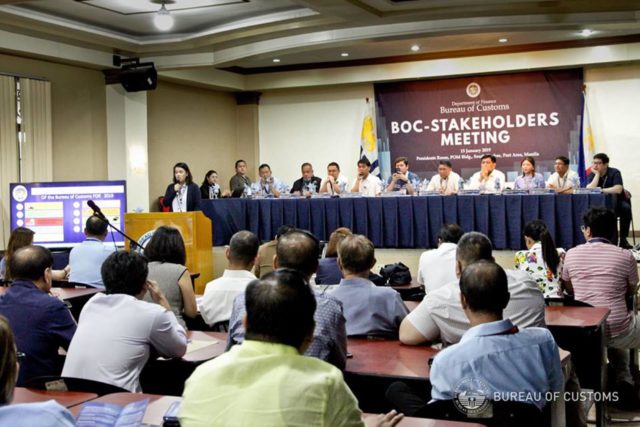The Philippine Bureau of Customs (BOC) is implementing a 10-point priority program aimed at accomplishing its organizational and operational targets for 2019, with fully automated processes topping the list.
Customs Commissioner Rey Leonardo Guerrero, in a text message to Asia Customs & Trade, said the program, which was presented to some stakeholders in a consultative meeting on January 15, is “aligned with the long-term strategic plan of BOC.”
Asked how stakeholders could help BOC implement smoothly its priority projects, Guerrero said, “Stakeholders can support the program by doing their part in its implementation, especially in complying with requirements and set standards, actively participating in consultations, and providing constructive feedback to help us improve in our performance and delivery of service.”
The first of BOC’s priority points is enhancing its information technology (IT) system.
“The vision is a fully automated customs processing system that integrates processes from assessment, inspections (intrusive and non-intrusive), warehousing, transit/transhipment cargo, vessel monitoring, licensing and permits, and even integrates human resources and incentives management,” Guerrero said.
BOC said the end goal is a computer system that minimizes the discretion of customs officers so as to reduce opportunities for corruption. The system is also envisioned to enable stakeholders to declare and monitor their importation and exportation, thus, dramatically improving ease of doing business with the customs bureau, and enhancing the bureau’s law enforcement and anti-smuggling capabilities.
Noting that “manpower is the best asset of an agency,” the bureau has for its second program filling up vacant plantilla positions to ensure the delivery of quality service.
BOC aims to have at least 1,000 new hires in 2019.
In connection with the second program, the third priority is to provide incentives “to motivate BOC personnel to improve their efficiency and performance.”
A new round of promotion will start this year, and the distribution of rewards will be done for those who have met or exceeded their targets, pursuant to Republic Act No. 9335, or the Lateral Attrition Act, BOC said.
To comply with the Customs Modernization and Tariff Act, which emphasizes BOC’s three main functions of revenue collection, trade facilitation, and border protection, an organizational and functional realignment will be the agency’s fourth priority program.
Officers and positions will also be created and upgraded to avoid redundant and overlapping functions, while some offices and positions will be abolished or merged for optimal efficiency.
The fifth program is providing upgraded facilities and a work-friendly environment for its employees and stakeholders through the construction, renovation, and refurbishment of buildings and offices.
Secured facilities and a state-of-the-art laboratory and library will also be constructed, BOC noted.
To fulfil its mandate of facilitating international trade while securing the border, BOC’s sixth priority is implementing an enhanced and intensified non-intrusive examination system. This entails programs to strengthen the agency’s risk management system and post-clearance audit and assessment functions.
To bolster compliance with its commitment to the World Customs Organization (WCO), BOC will also implement an Authorized Economic Operator (AE) program that is open to all compliant stakeholders. BOC in 2017 issued Customs Administrative Order (CAO) No. 05-2017, which provides the rules and regulations for establishing an AEO program in the Philippines. AEO—a concept under the WCO SAFE Framework of Standards to Secure and Facilitate Global Trade—represents a customs-to-business partnership that seeks to enhance international supply chain security and facilitate movement of legitimate goods.
The seventh priority is enhancing BOC’s intelligence and enforcement capabilities. The customs police force will be reorganized and strengthened, and its intelligence function intensified through inter-agency collaboration.
The eighth is to codify and harmonize all of BOC’s implementing rules and regulations, CAOs, and customs memorandum orders for accessibility, consistency, and uniformity.
For easy access to information, BOC will publish a manual of all implementing rules and regulations and handbook outlining employee duties and responsibilities.
To sustain the quality service that stakeholders deserve, BOC will align all its offices with ISO 9001:2015 Quality Management System, and implement a Customs Integrity Program as its ninth priority.
Lastly, BOC will pursue the passage of necessary customs administration-related laws that “will enable the holistic development of the bureau.” – Roumina Pablo









